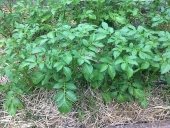








Mobile Chicken house build-
http://www.permies.com/t/48452/chickens/Mobile-Chicken-house#388147
 1
1




Come join me at www.peacockorchard.com








Xisca - pics! Dry subtropical Mediterranean - My project
However loud I tell it, this is never a truth, only my experience...








What were the results Elle?elle sagenev wrote:I'm trying 3 different potato planting techniques this year.
I make a Maple Syrup instructional movie! Check it out HERE
SKIP books, get 'em while they're hot!!! Skills to Inherit Property
See me in a movie building a massive wood staircase:Low Tech Lab Movie
 3
3




 3
3












when you're going through hell, keep going!

 4
4




Meg Mitchell wrote:When growing daikon to break up clay soil, can I harvest and eat them or is the idea to let them break down in the ground and add organic matter to the clay? I love me some daikon radish lol.
A build too cool to miss:Mike's GreenhouseA great example:Joseph's Garden
All the soil info you'll ever need:
Redhawk's excellent soil-building series









If I am not for myself, who will be for me?
If I am only for myself, what am I?
If not now, when?

|
Take me to the scene of the crime. And bring that tiny ad:
Homestead Pigs Course
https://permies.com/wiki/365748/Homestead-Pigs
|






